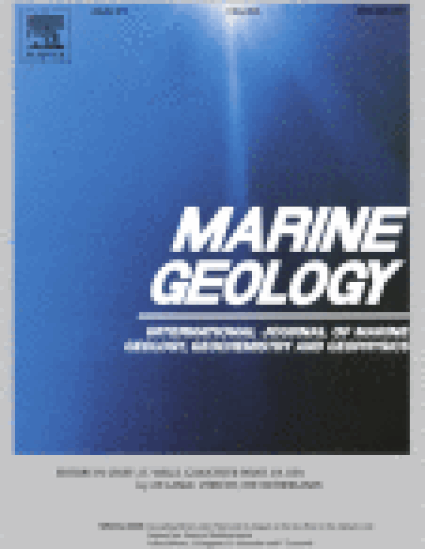
Article
Magnetic Fabric Analysis as a Method for Determining Sediment Transport and Deposition in Deep Sea Sediment
Marine Geology
(2014)
Abstract
Anisotropy of magnetic susceptibility (AMS) analyses and the characteristic relationship between the q-value (magnetic lineation/foliation) and the imbrication angle (β) of the minimum susceptibility axes from the bedding plane (q–β diagrams) provide insight into the paleocurrent direction and depositional processes. During Integrated Ocean Drilling Program (IODP) Expedition (Exp) 333 sediments were cored from within the Nankai Trough accretionary prism at Site C0018, the depositional center for six mass transport deposits (MTDs). We analyzed specimens from the two subunits, Ia and Ib, and the six mass transport deposits identified during Exp 333. The sediments that are unaffected by MTD emplacement record episodic changes in paleocurrent direction and depositional processes including current, slope gravity, viscous suspension, and grain collision over the past 1.24 Ma at Site C0018. Magnetic fabric analyses proved useful in identifying sediment disturbance and the direction of movement at the time of emplacement, especially within MTDs 1, 2, 5, and 6. The magnetic fabric analyses were also useful in characterizing undeformed sediments within MTD 3. These undeformed sediments likely record primary depositional fabrics. We propose two additional fields, deformation/disturbance and tilting, on the q–β diagram in order to account for steep imbrication angles and relatively high q-values.
Keywords
- Magnetic fabric,
- Nankai trough,
- Sediment deposition
Disciplines
Publication Date
October, 2014
Publisher Statement
Copyright © 2013 Elsevier B.V. All rights reserved.
Citation Information
Bernard A. Housen, B. Novak, Y. Kitamura, T. Kanamatsu, et al.. "Magnetic Fabric Analysis as a Method for Determining Sediment Transport and Deposition in Deep Sea Sediment" Marine Geology Vol. 356 (2014) Available at: http://works.bepress.com/bernard_housen/14/
